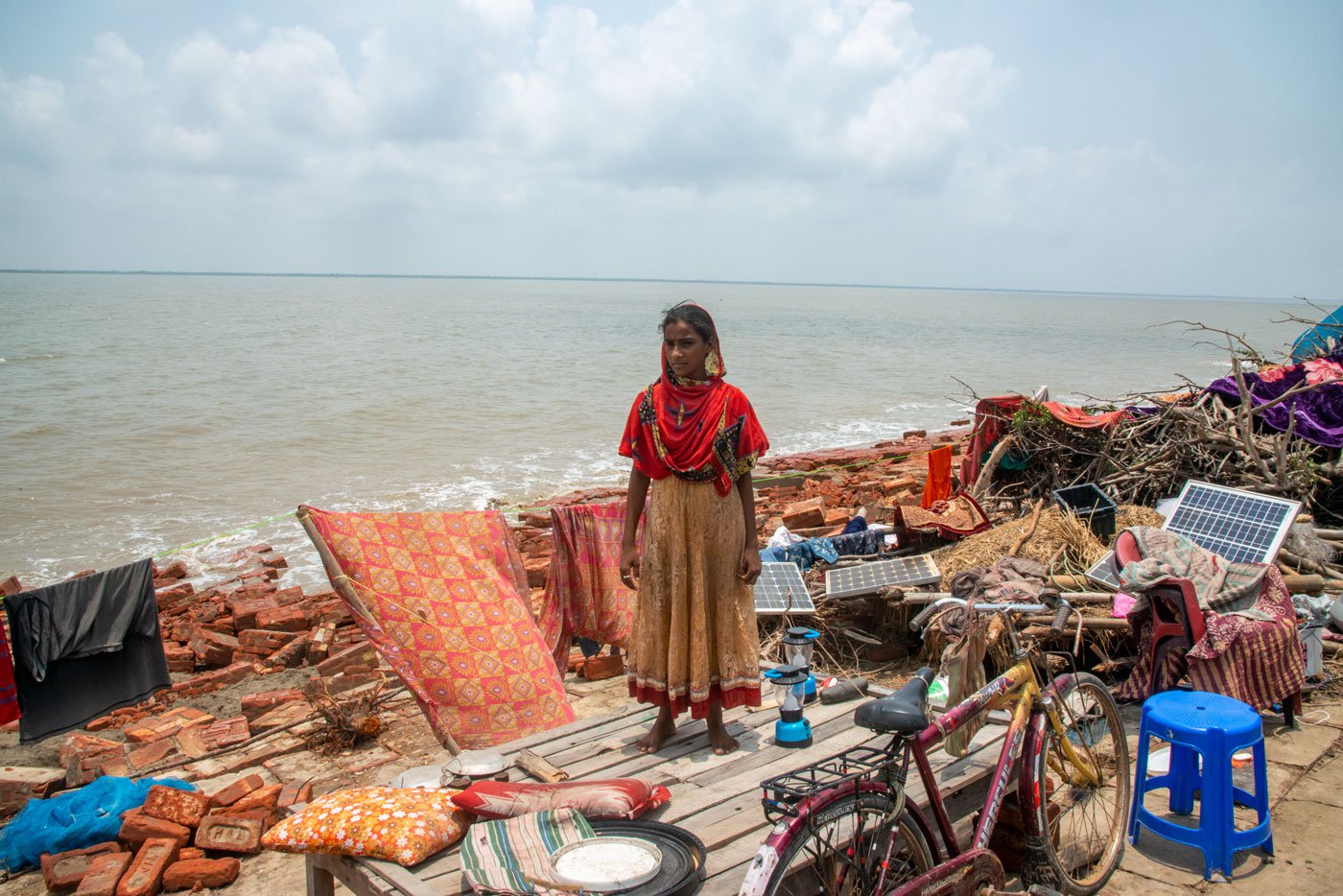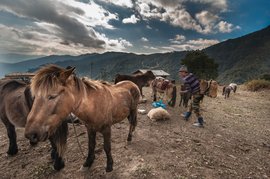“God could have killed us in one go instead of killing us in parts," says Azhar Khan, a farmer who lost his home in the tidal waves that engulfed Mousuni island in the Sundarbans on May 26.
At high tide that afternoon, a storm surge in the Bay of Bengal triggered high waves in Muriganga river, which were 1-2 metres higher than usual. Water breached the embankments and flooded the low-lying island, damaging homes and farms in its wake.
The storm surge was brought on by Cyclone Yaas just before noon on May 26, when it made landfall near Balasore in Odisha – about 65 nautical miles southwest of Mousuni. A very severe cyclonic storm, it had gathered wind speeds of 130-140 kilometres per hour.
"We saw the storm coming and thought we had time to move our belongings, but the water came rushing into the village,” says Majura Bibi from Bagdanga mouza (village). She lives near the embankment on Muriganga, west of Mousuni. “We ran for our lives, but could not save our things. Many of us climbed on trees to save our lives."
Boats and launches to the island’s four villages – Bagdanga, Baliara, Kusumtala and Mousuni – had been stopped for three days because of incessant rains. When I reached Mousani on the morning May 29, most of it was underwater.
"My land is under saline water," said Abhilash Sardar, whom I met at the shelter in Bagdanga. "We farmers have lost our livelihood," he said. "I can't farm on my land for the next three years. It may take up to seven years for it to become fertile again."
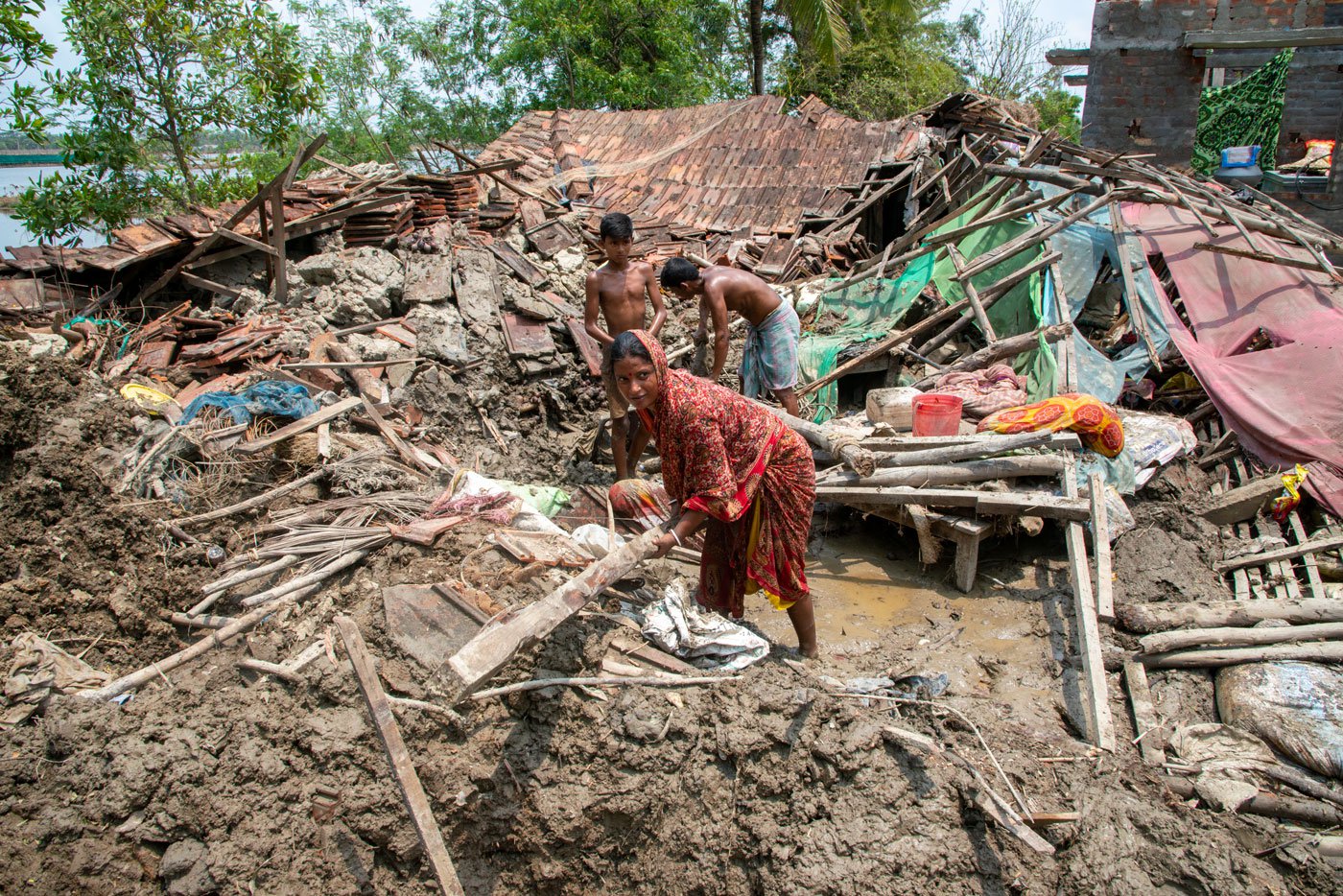
The Gayen family lost their home in Bagdanga during the storm surge. “Our house has collapsed, you can see the condition. We can’t recover anything from the rubble”
The wreckage caused by Yaas is the latest in a series of calamities to befall Mousuni, an island surrounded by rivers and the sea, in Namkhana block of West Bengal's South 24 Parganas district.
A year ago – on May 20, 2020 – Cyclone Amphan had devastated the Sundarbans. Earlier, the cyclones Bulbul (2019) and Aila (2009) had wreaked havoc on the islands. Aila had ruined 30-35 per cent of land in Mousuni, making much of its southern coast unfit for agriculture due to an increase in soil salinity.
Experts have
observed
that it is not only the rising sea surface temperatures – an indicator of global warming – but also a rise in coastal surface temperatures that are influencing cyclones to intensify in the Bay of Bengal. The intensification rate to the stage of a severe cyclonic storm has increased in the months of May, October and November, a 2006 study by the India Meteorological Department (IMD)
notes
.
Before Yaas, about 70 per cent of the island’s area of over 6,000 acres was cultivable, says Saral Das, who owns five acres in Bagdanga. “Now only 70-80 acres of land is left dry."
Almost all of the island’s 22,000 people (Census 2011) have been affected by the cyclone, adds Das, who also works at the Cooperative School in Bagdanga. “Nearly 400 houses on the island have been completely destroyed and 2,000 are damaged.” Much of the livestock, as well as poultry and fish, have been lost, he says.
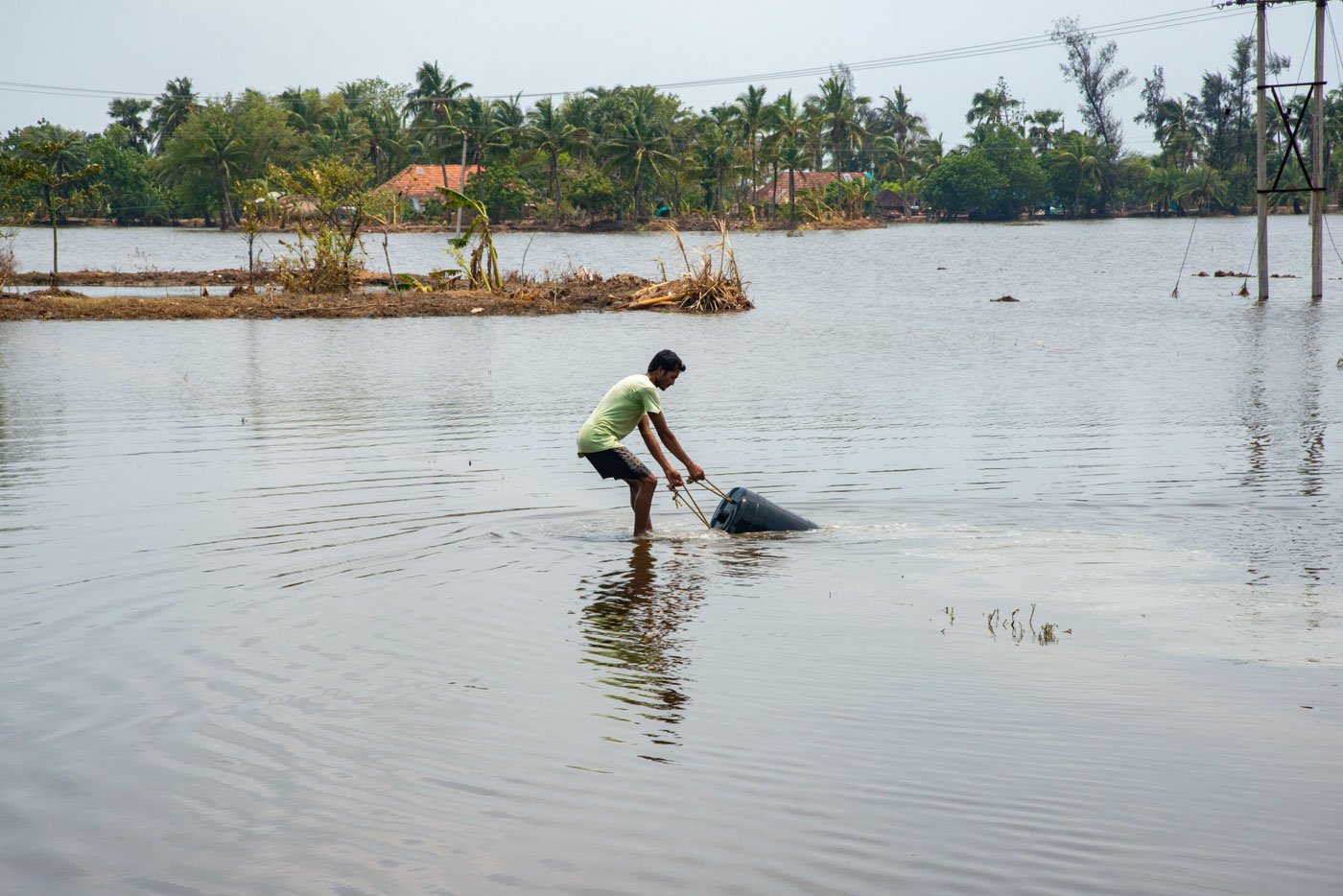
A Bagdanga resident drags a drum of drinking water through the flooded paddy fields
Access to tube wells, the main sources of drinking water, has become difficult in Mousani after the storm . “Many of the tube wells are underwater. We’re walking about five kilometres in waist-deep mud to reach the nearest tube well,” says Jaynal Sardar.
Mousuni’s people will have to learn to live with such disasters, says Jyotirindranarayan Lahiri, a conservationist and the editor of Sudhu Sundarban Charcha , a quarterly magazine on the Sundarbans and its people. “They must adopt new strategies for survival, like building houses that withstand floods."
People in disaster-prone areas like Mousuni don’t depend on government relief, says Lahiri. “They survive by being prepared.”
The West Bengal government has
assessed
that at least 96,650 hectares (238,830 acres) with standing crops have been flooded across the state. In Mousuni, where
farming
is the main source of livelihood, things will become worse now as most of its fertile land is under saline water.
And while the islanders are still coming to terms with destruction left behind by Cyclone Yaas, the IMD has
forecast
a storm in northern Bay of Bengal on June 11, which could bring heavy rainfall in the Sundarbans.
In Bagdanga, however, Bibijan Bibi has a more pressing concern. “Once the water recedes,” she says, “the
gokhra
[Indian cobra] will start entering our homes. We are terrified.”
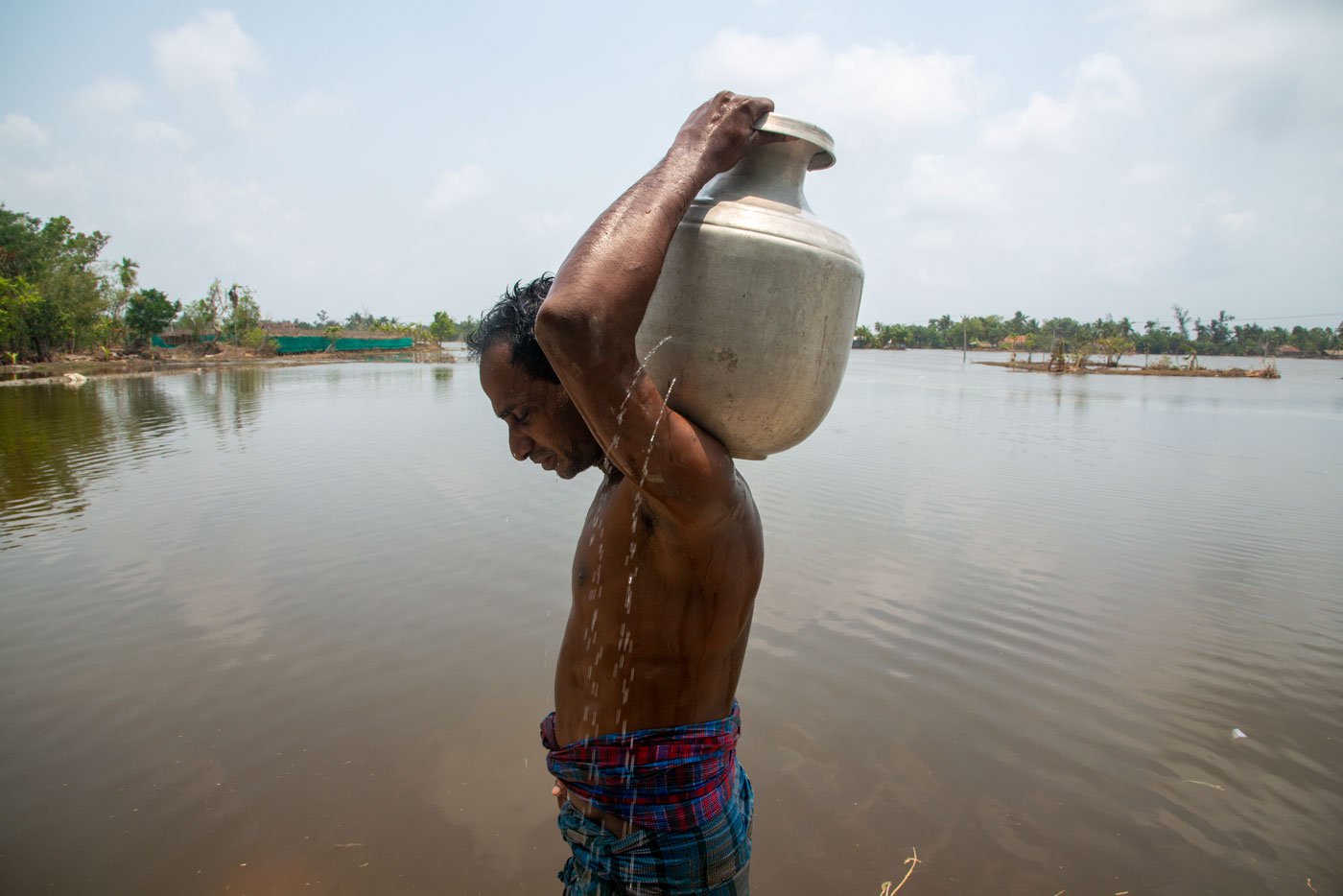
Niranjan Mandal walks through mud, carrying drinking water for his family from a tube well
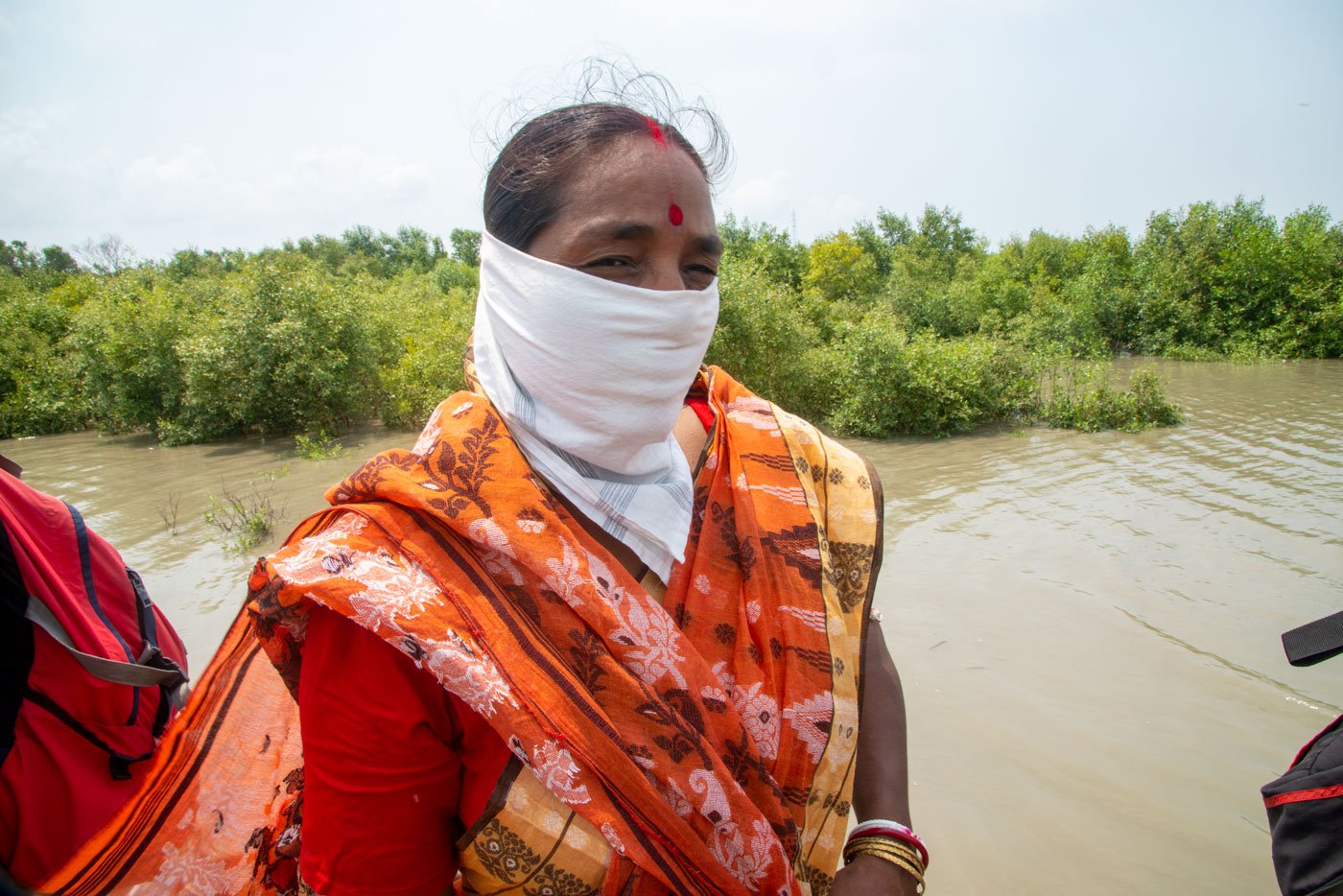
“My daughter lives in Mousuni. I haven’t been able to reach her over the phone for a couple of days,” says Pratima Mandal from Namkhana. She is certain that her daughter’s house is underwater. “I am going there to check on her”
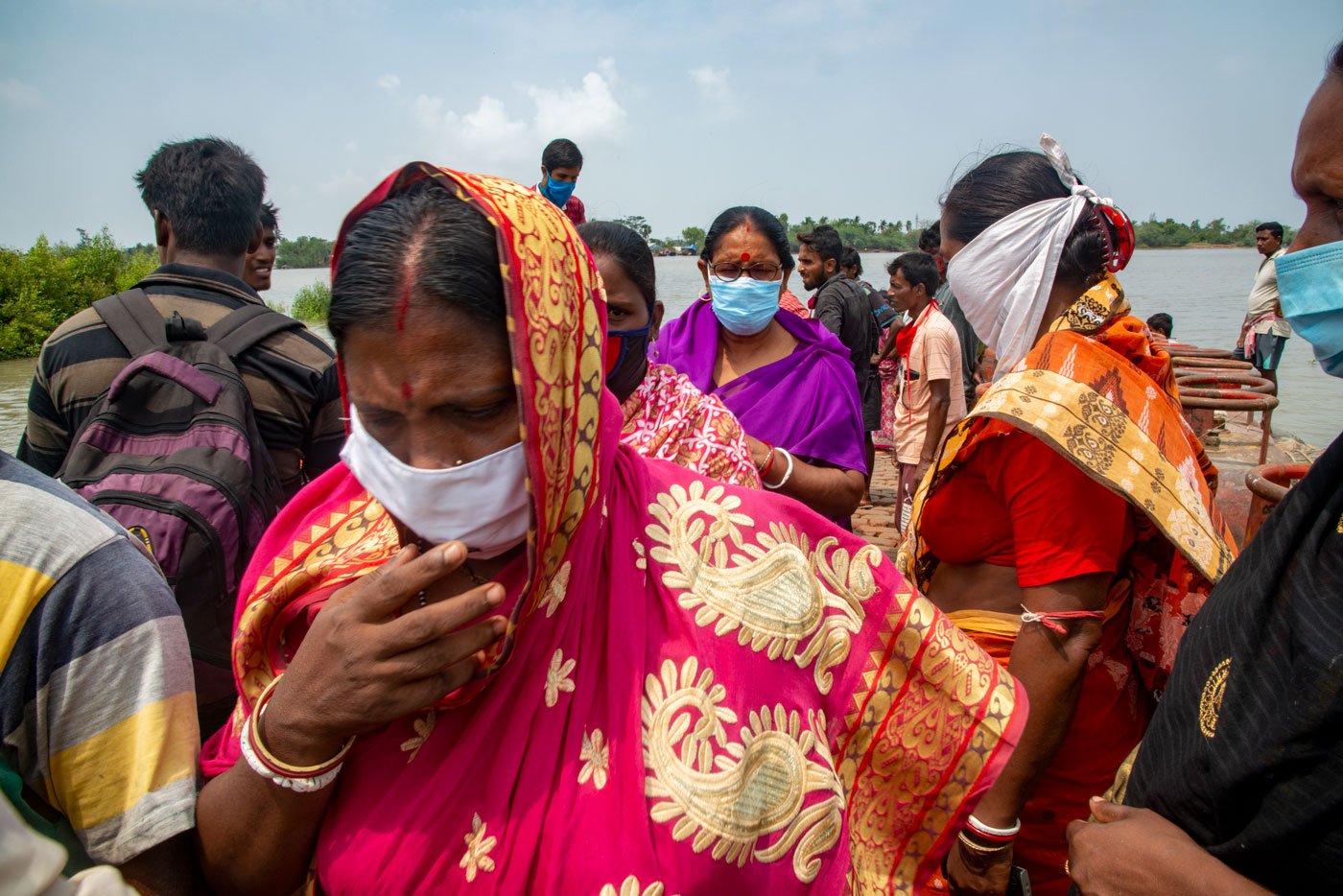
Ferries and boats are the only modes of transport to reach Mousuni island. Services from Namkhana were stopped for three days because of Cyclone Yaas. The islanders were relieved when the ferries started plying on May 29
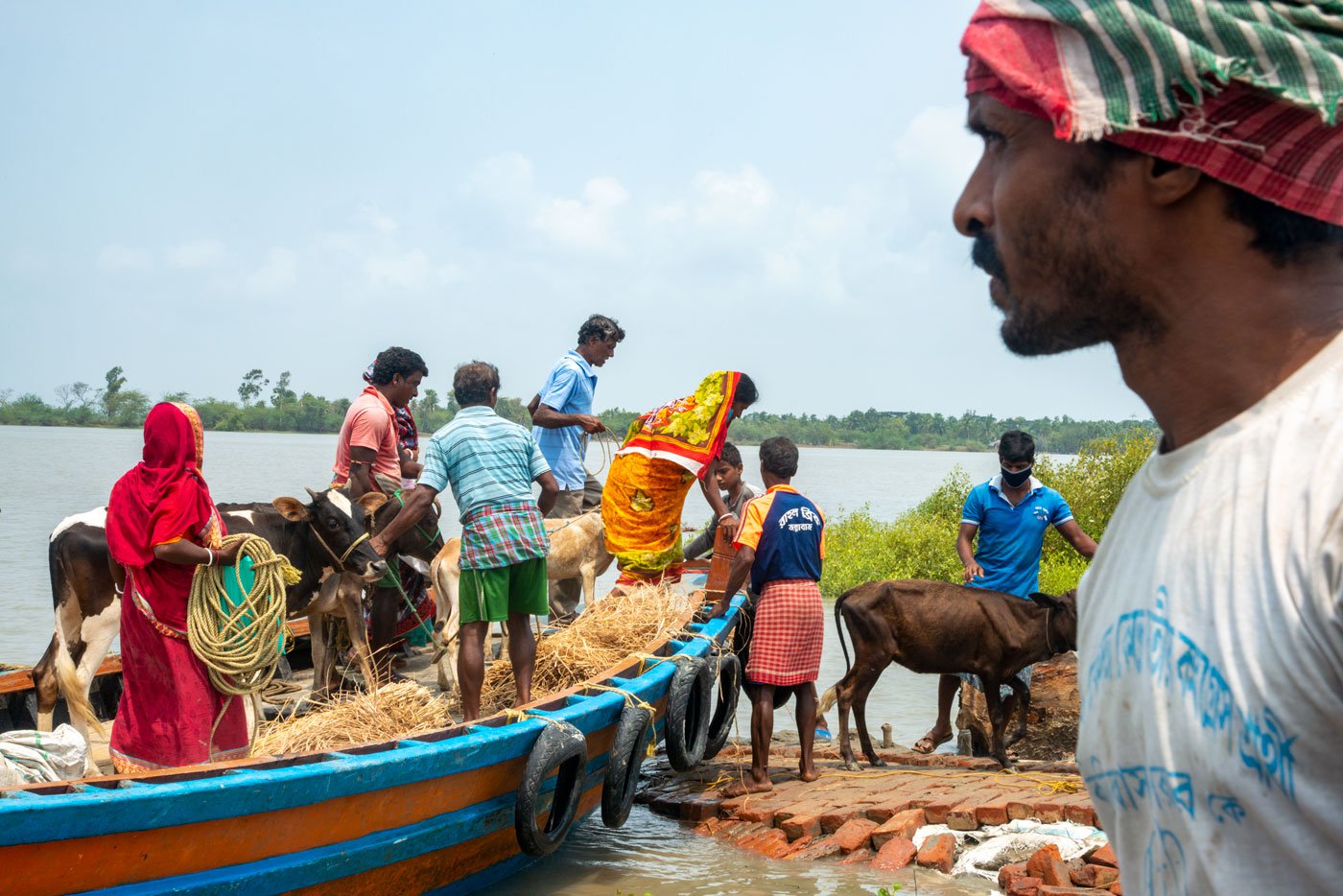
A family from a flood-affected part of Mousuni struggled to bring their cattle to safety in Bagdanga
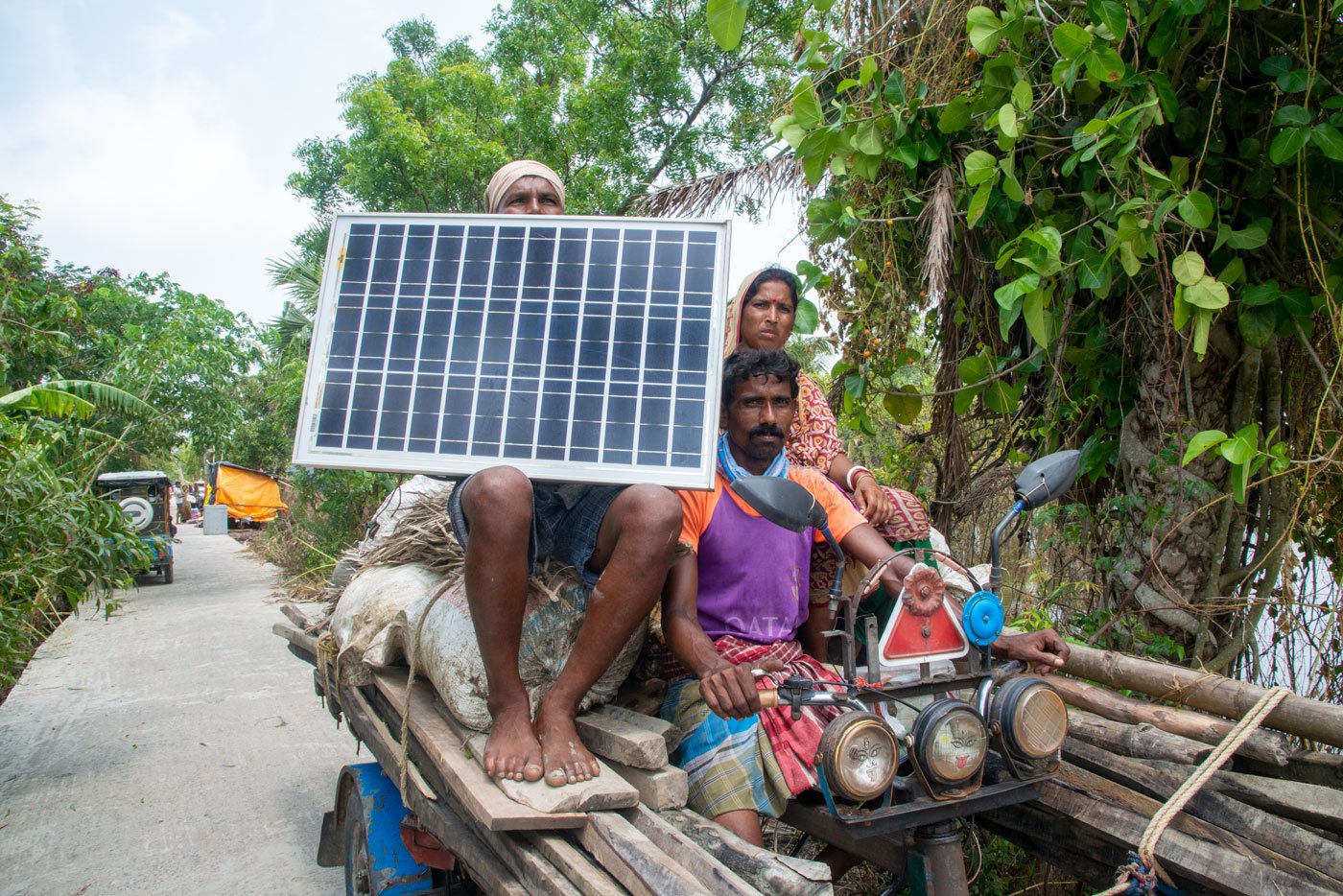
Many families from the low-lying areas of Mousuni had to evacuate their homes with their belongings
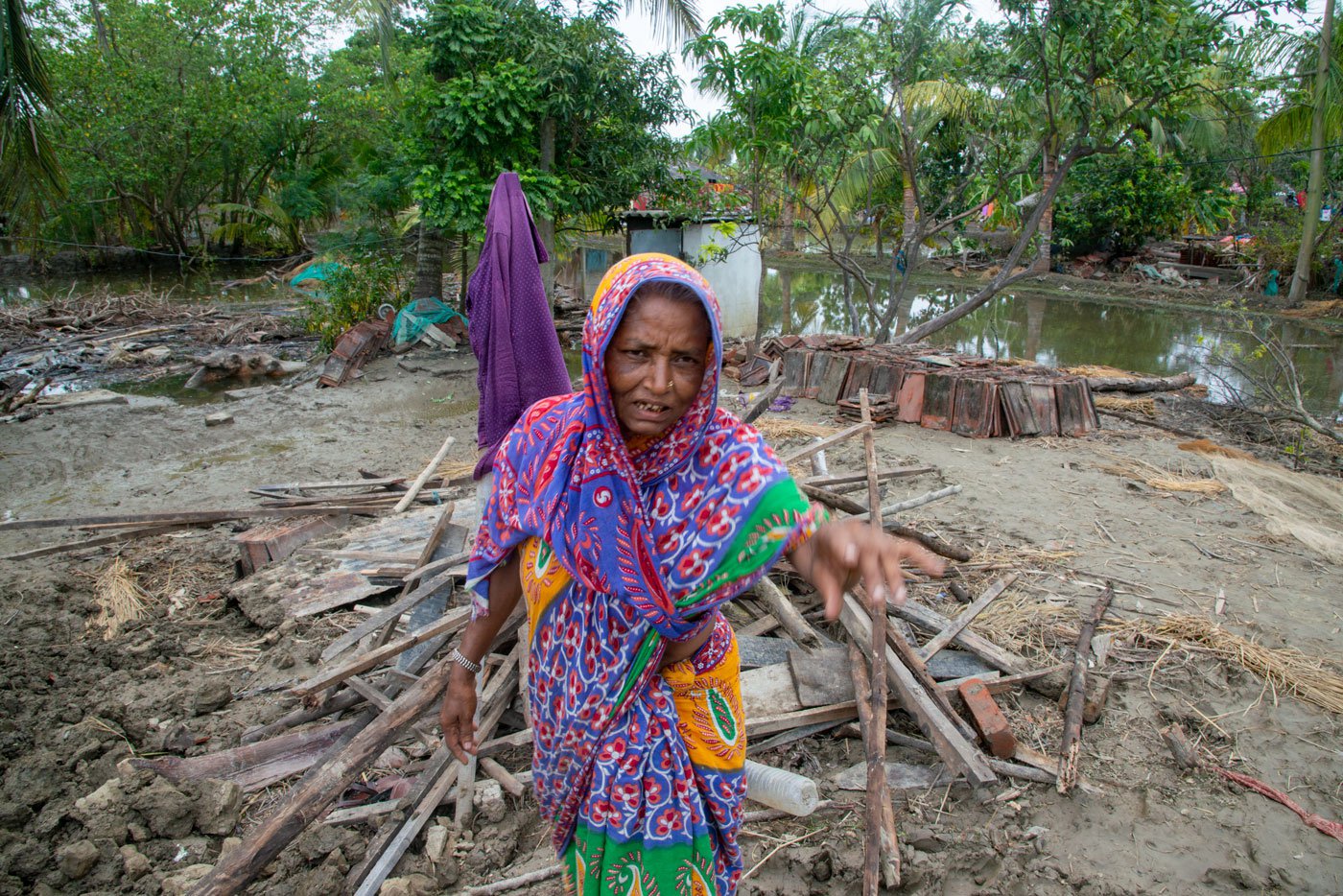
Water rushed into her home, says this lady in Bagdanga. She couldn’t save any of her possessions
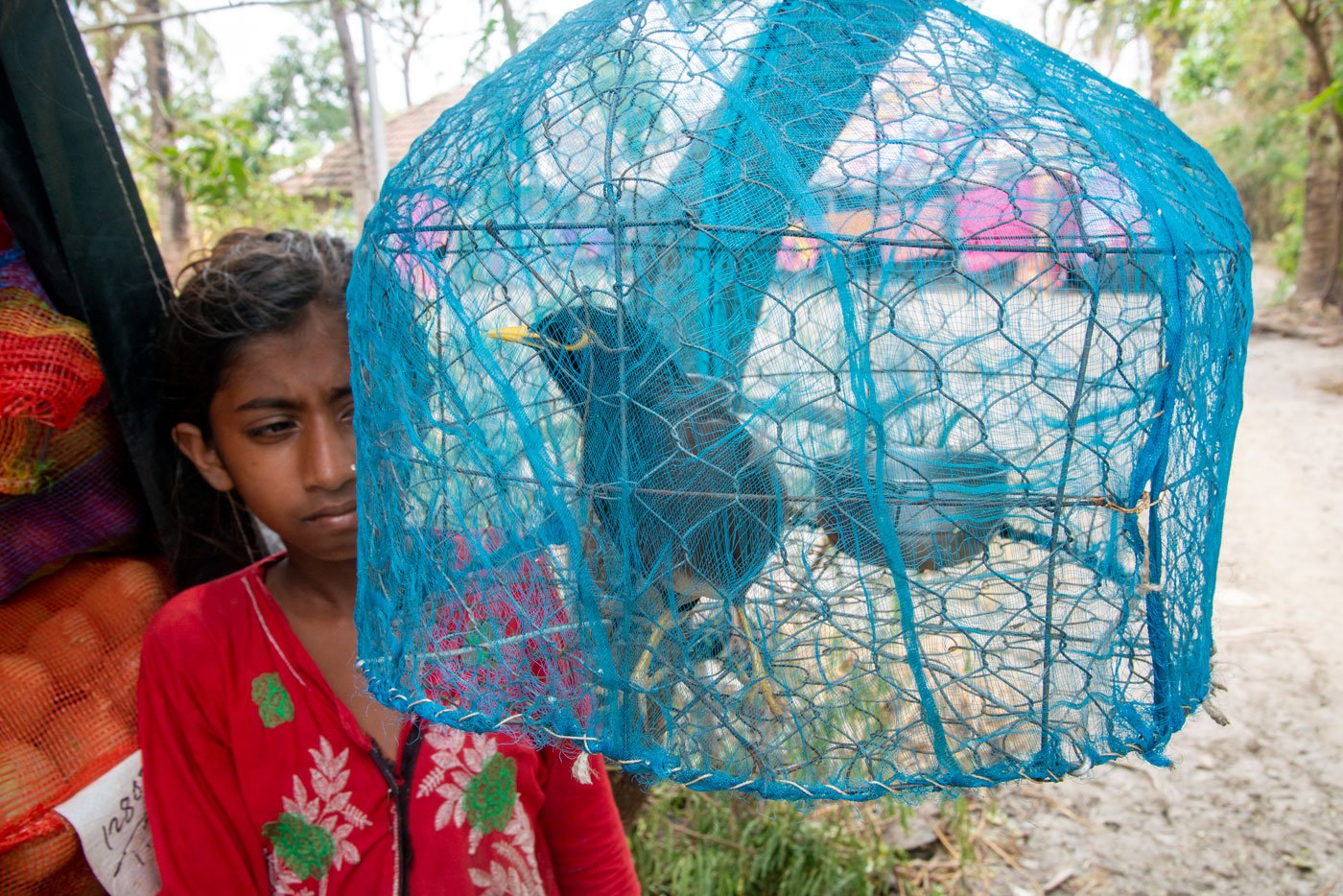
“I am glad I could save her," the little girl says about her bird. "She’s my best friend”
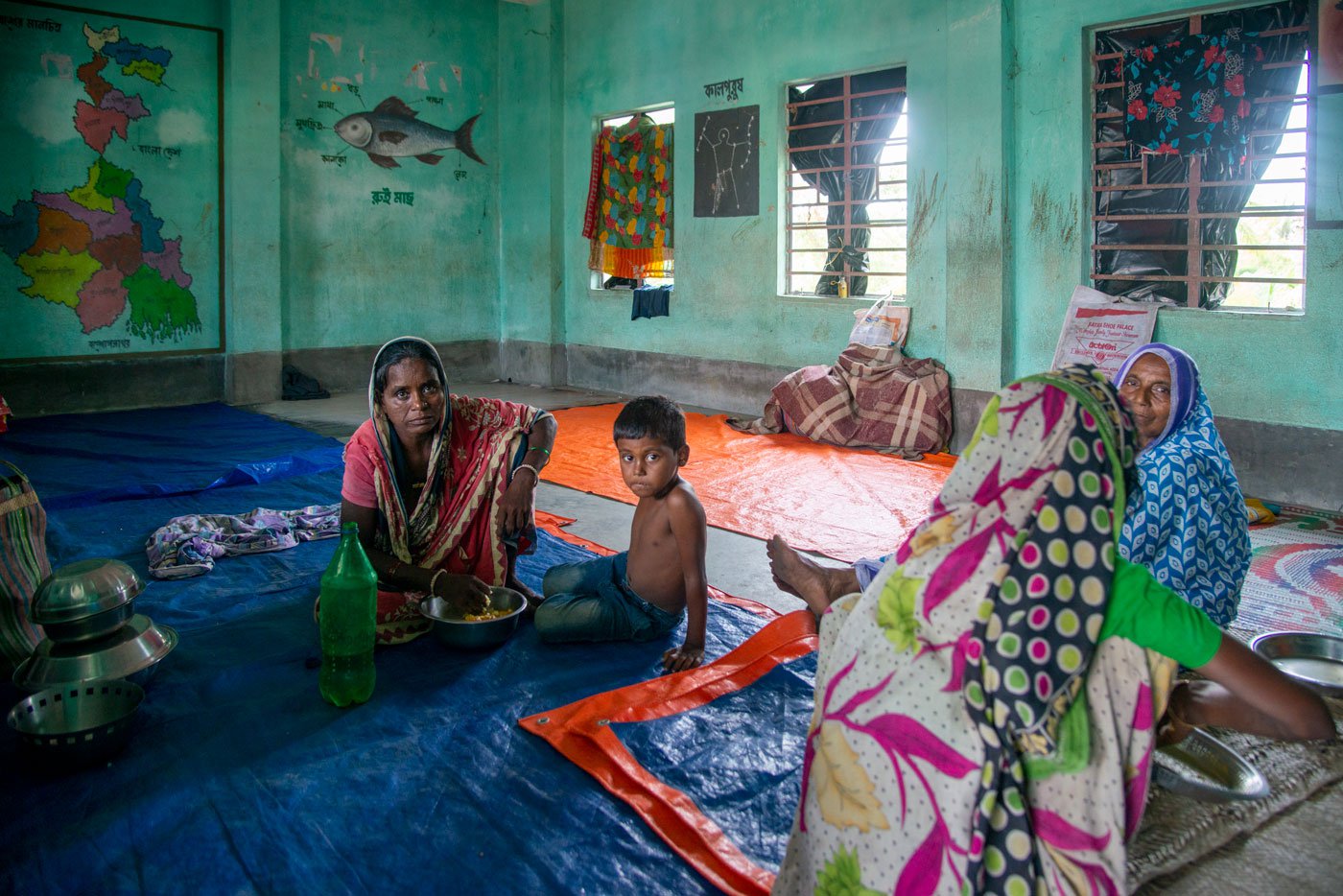
A few of the island's women at the shelter in Bagdanga, waiting for the flood waters to recede
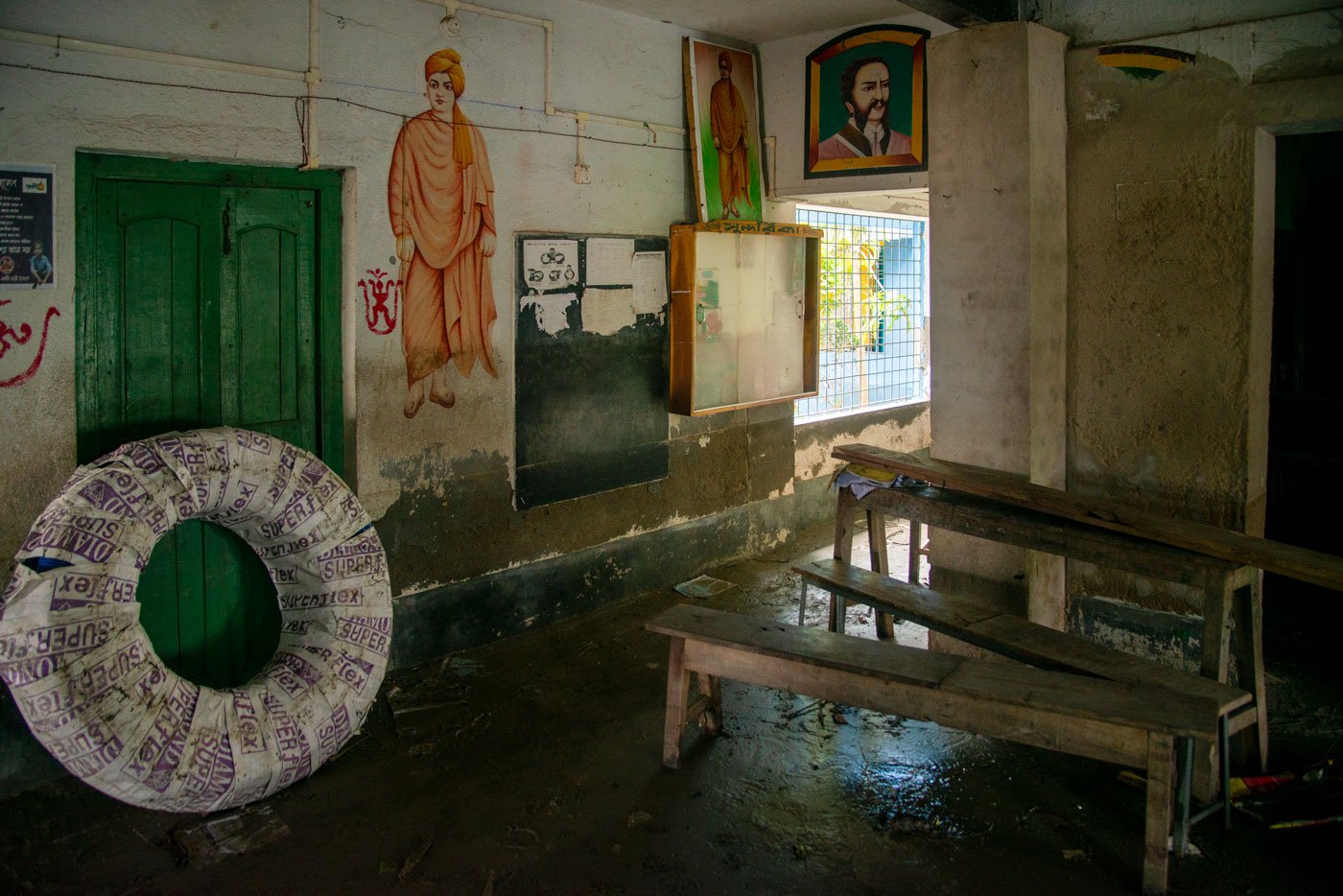
A Covid care centre set up in the village primary school was flooded too
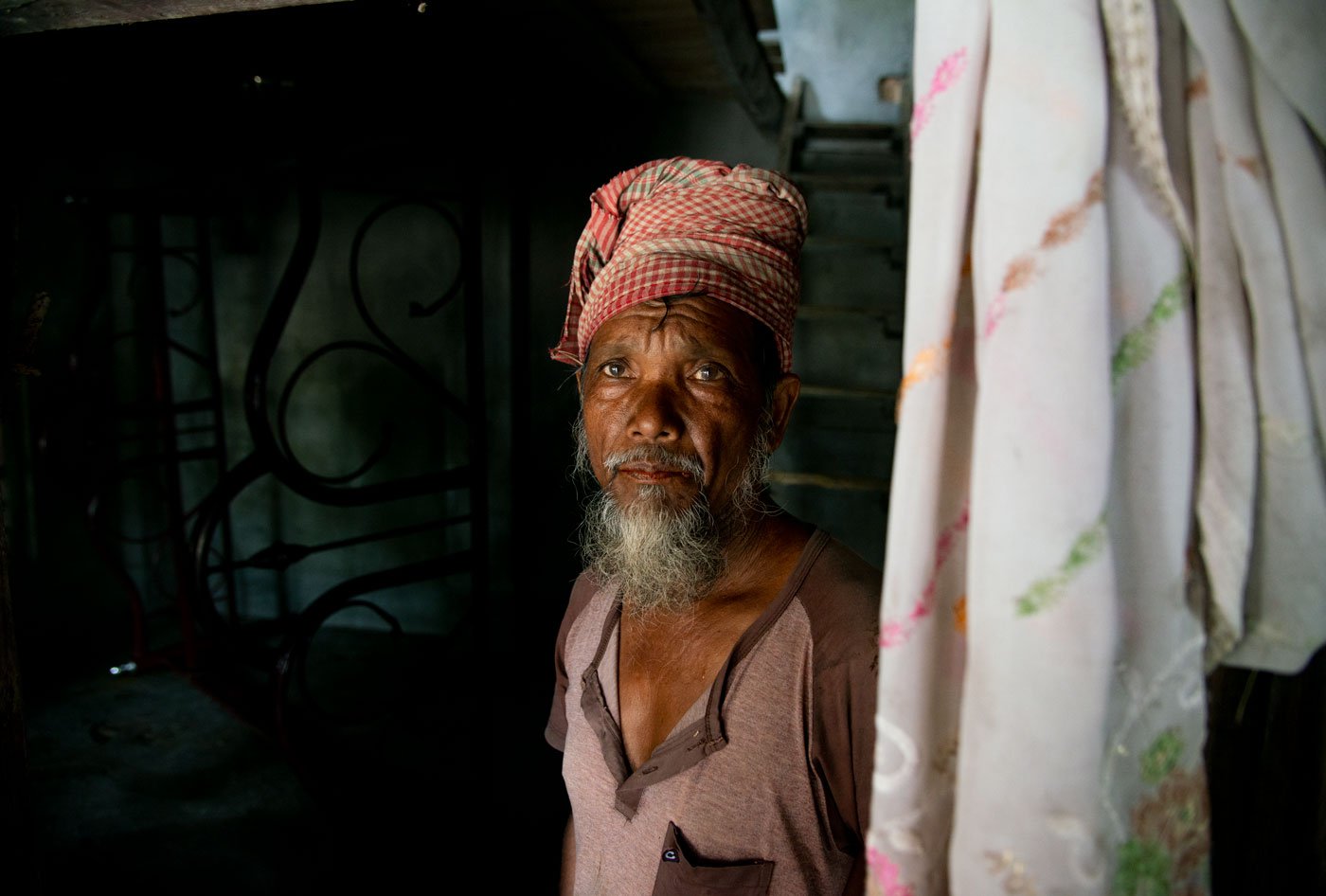
Masud Ali lost his entire year’s savings to the flood. “Water destroyed the entire stock of about 1,200 kilos of rice ,” he says. “Rice grain becomes inedible once saline water touches it. I’ll have to throw away 40 bags now”
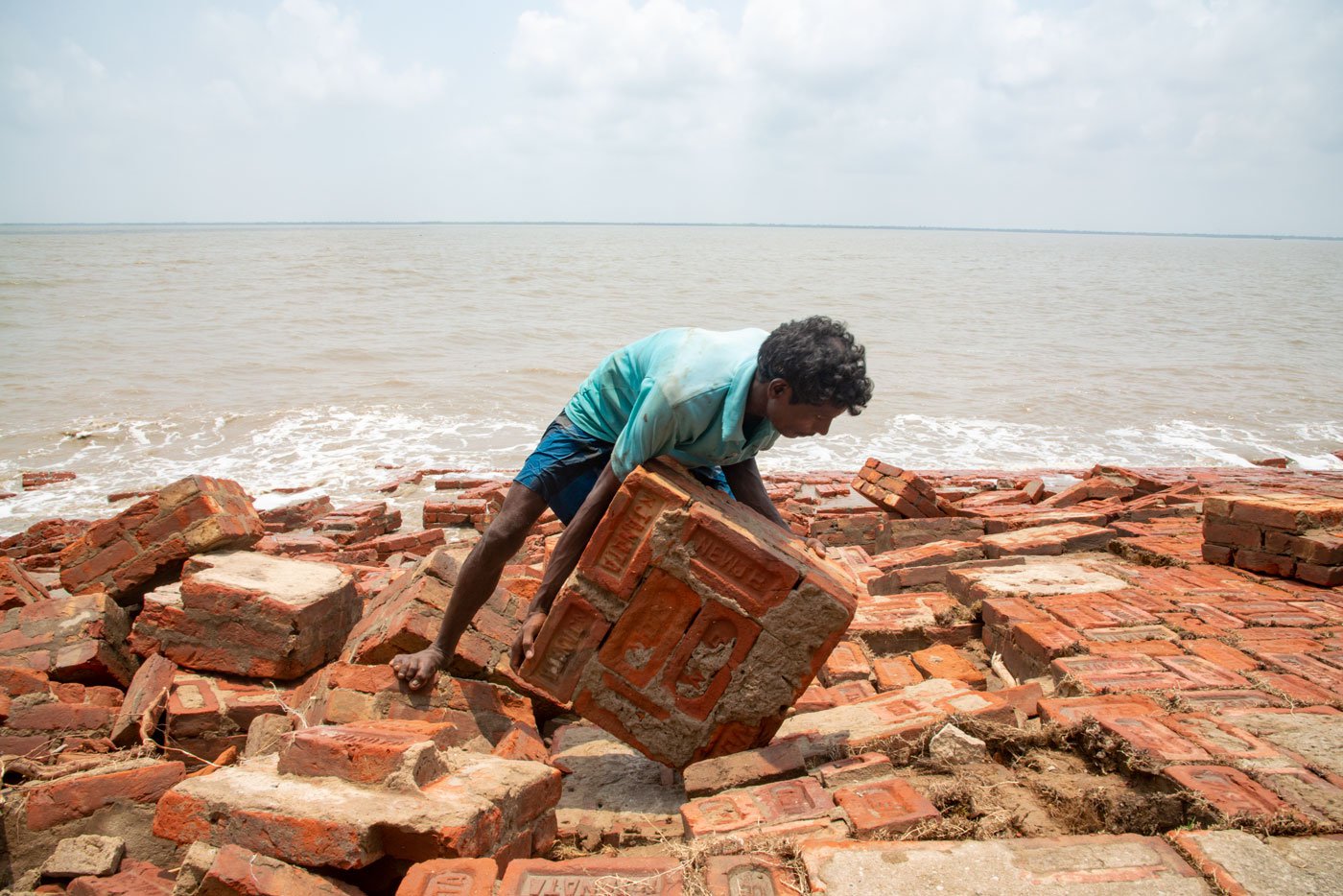
Imran tries to push a block of damaged bricks t o a higher elevation. Tidal waves had breached the levee on the Muriganga river and flowed inland
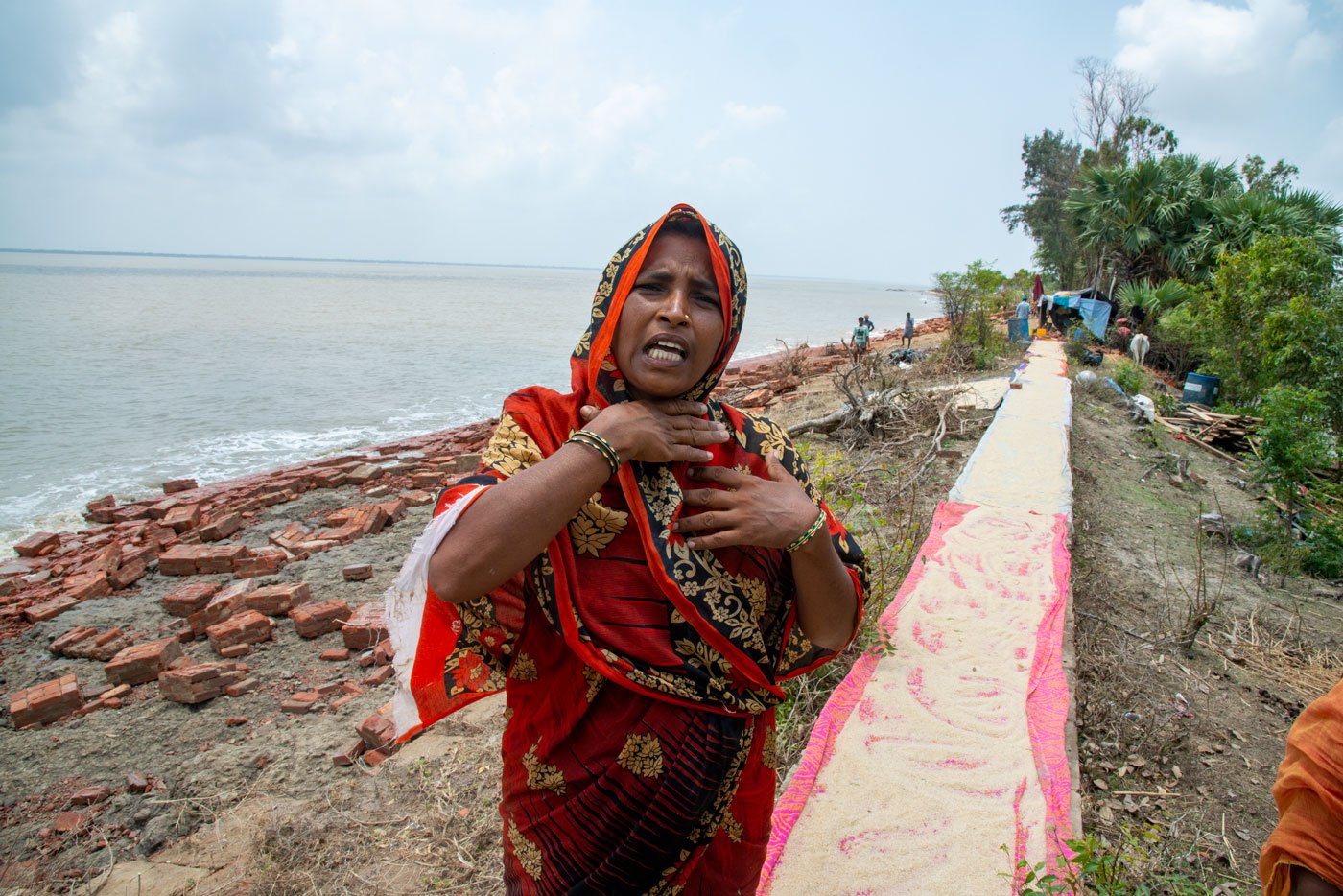
Majura Bibi’s house near the embankment was completely destroyed by the waves. “We ran when water rushed in. We couldn’t take even a penny or document with us.” She’s living in a tent now
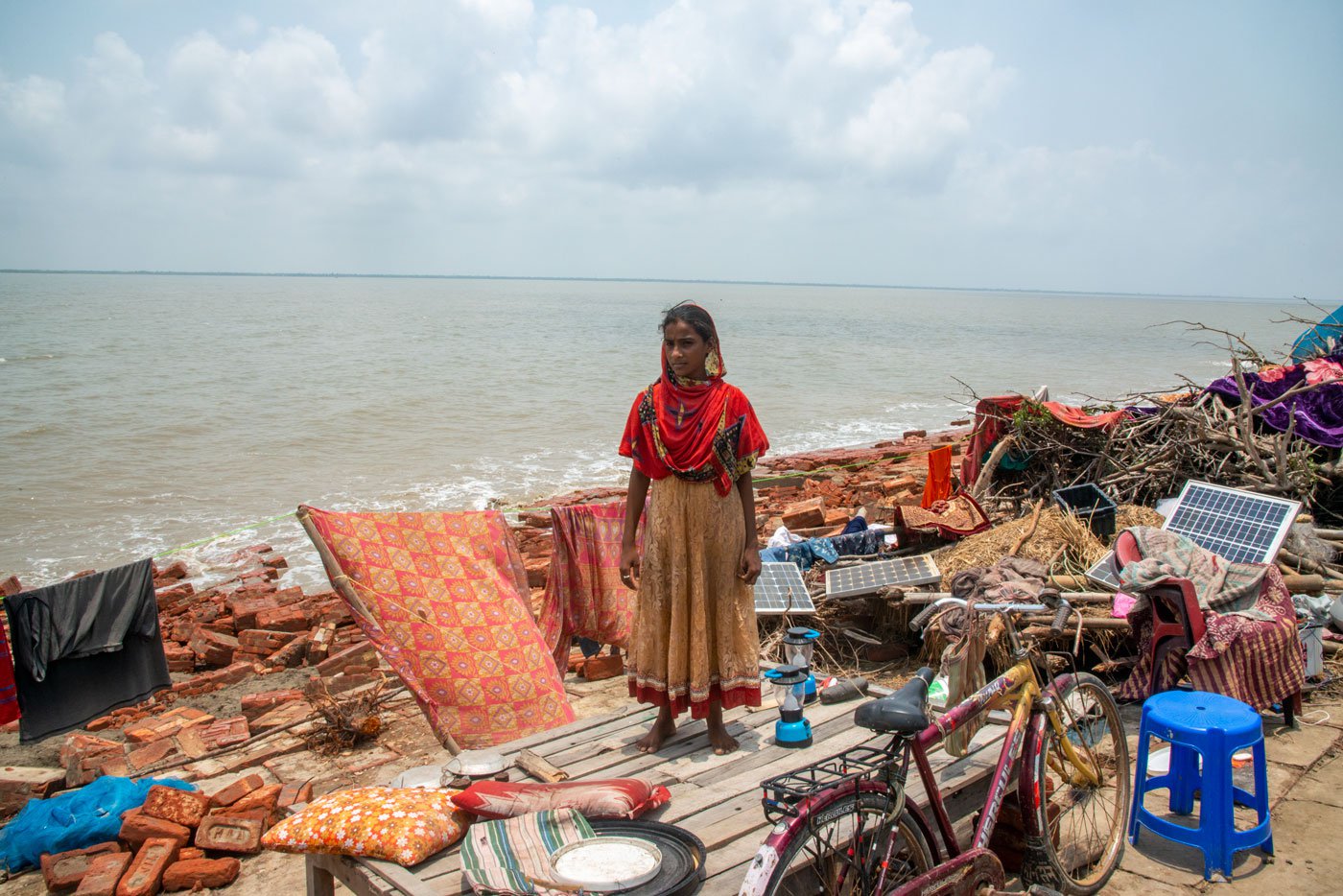
Ruksana, who also lives near the embankment, lost her school textbooks in the flood
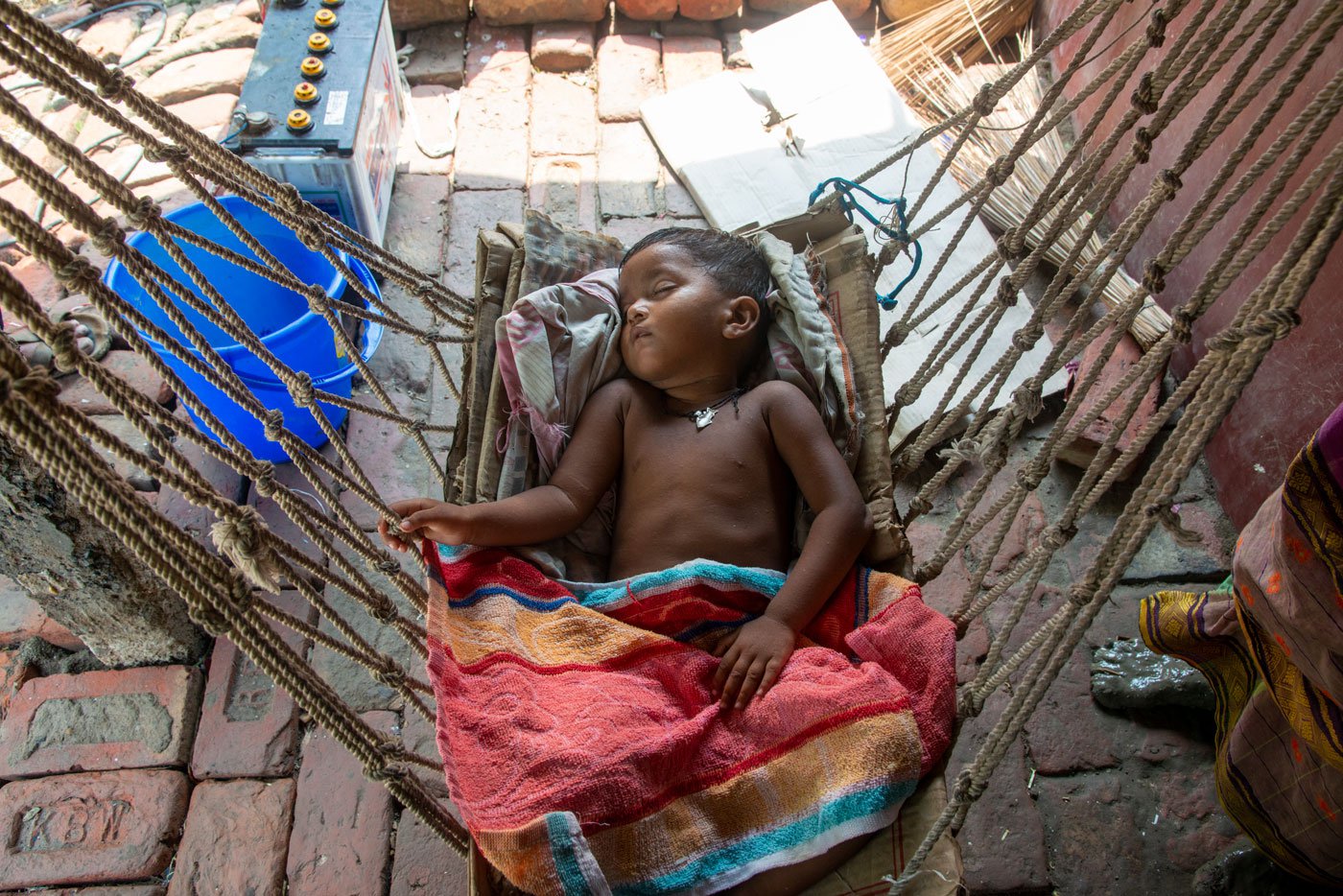
This baby was almost washed away by the flood waters. “My son-in-law was able to save him by climbing a tree,” says Promita, the baby's grandmother . “He is only eight months old, but he has nothing to wear as his cloths are gone”
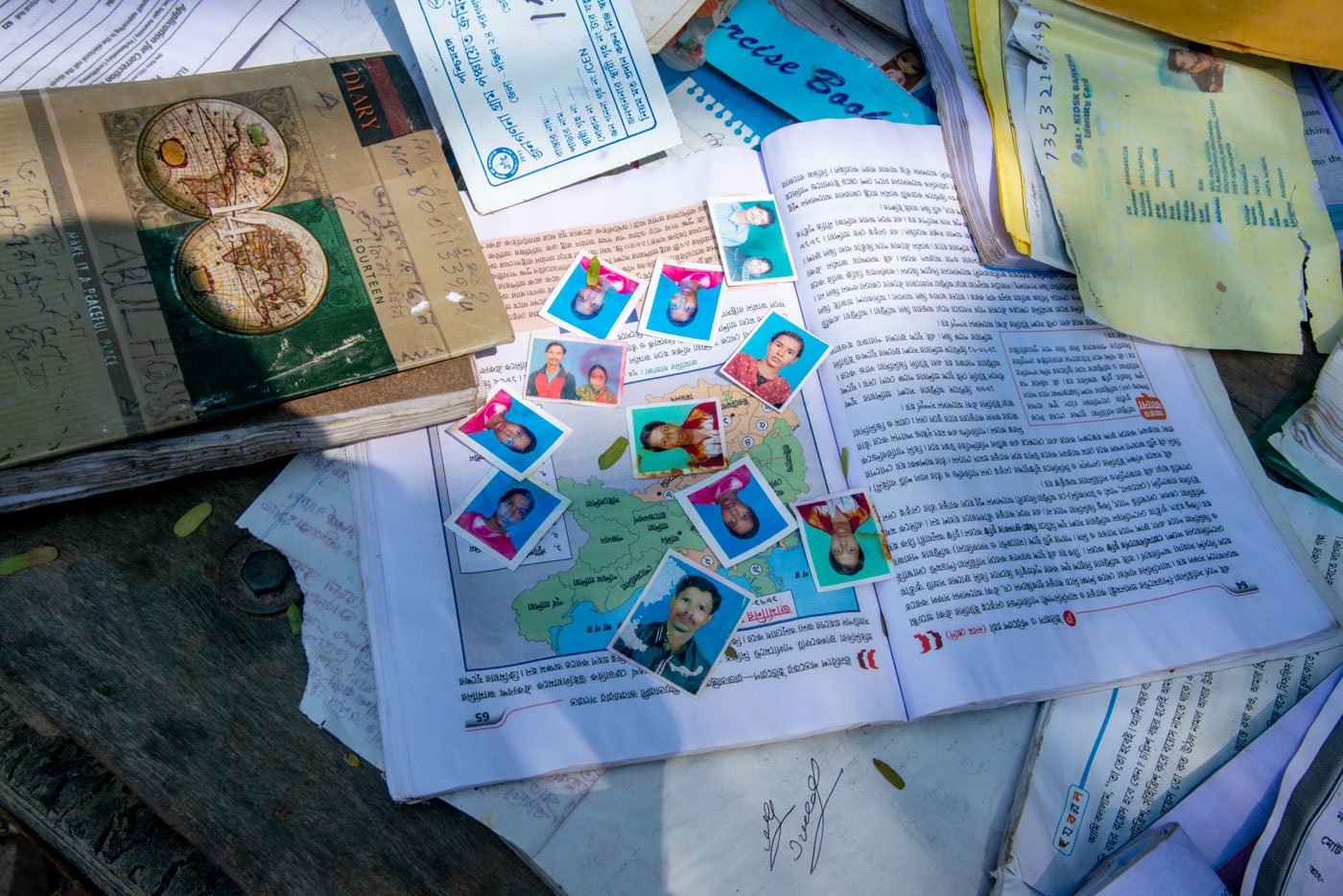
Papers, books and photos that the waters didn’t swallow up are kept in the sun to dry
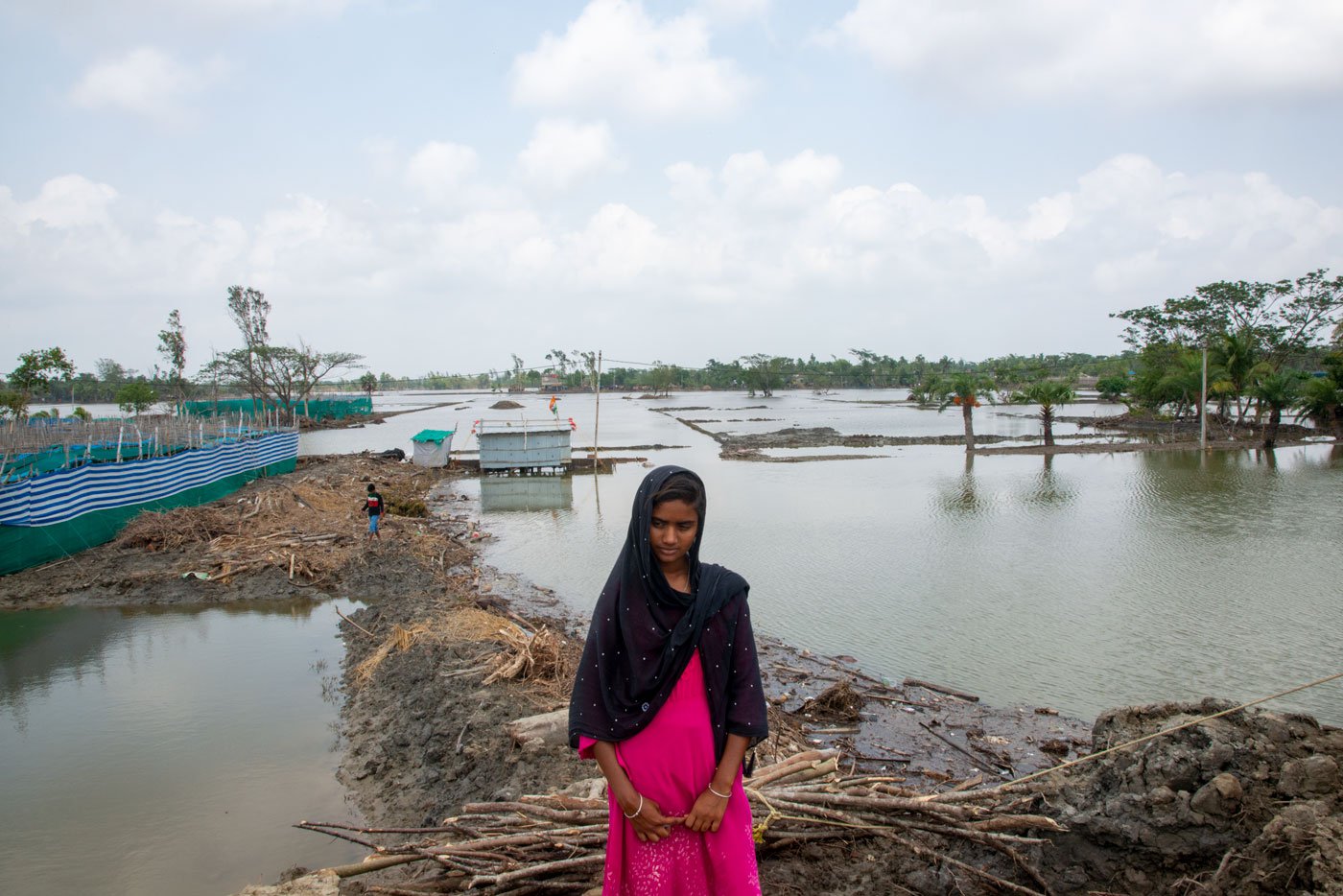
A student of Class 8, Zahanara lost her all her books and documents on May 26
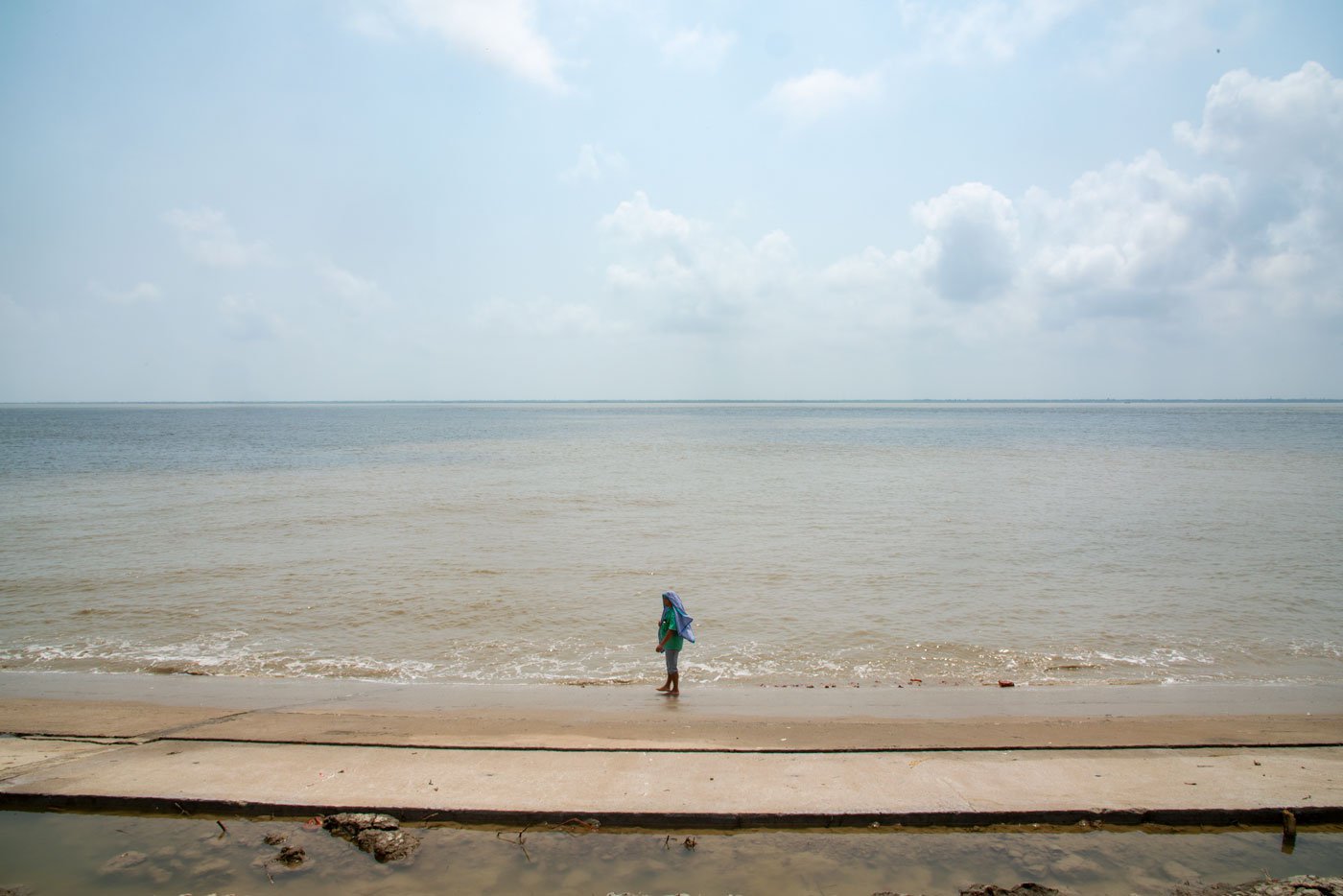
The breached embankment on Muriganga, which is a distributary of the Ganga. The river meets the Bay of Bengal at the sourthern tip of Mousuni island
